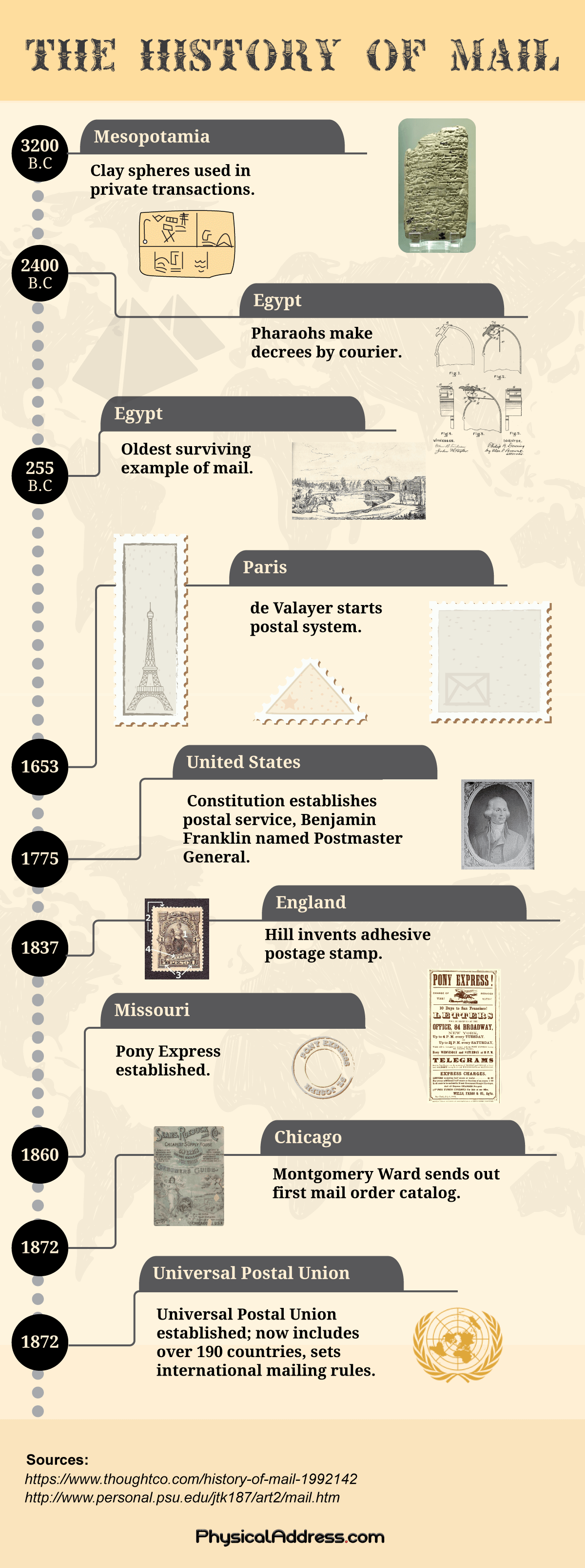
The Evolution of Mail: A Journey Through Time
In an era dominated by digital communication, it’s fascinating to delve into the rich tapestry of the history of mail. From ancient civilizations to modern-day postal services, the exchange of information and goods has played an instrumental role in shaping societies and economies worldwide.
1. Mesopotamia, 3200 B.C.:
The roots of mail can be traced back to ancient Mesopotamia. People used clay spheres as a means of conducting private transactions. These spheres, often sealed, acted as the earliest form of envelopes, safeguarding the privacy of its contents.
2. Egypt, 2400 B.C.:
Egyptians took communication up a notch. The Pharaohs, rulers of ancient Egypt, disseminated decrees and important announcements through couriers. This shows the significance of swift and reliable communication even in ancient times.
3. Egypt, 255 B.C.:
The dedication to preserving correspondence is evident with the discovery of the oldest surviving example of mail from this period.
4. Paris:
Fast forward to Europe, and we find that Paris, one of the world’s most romantic cities, wasn’t just about love stories. The city saw the establishment of its postal system when de Valayer initiated the service.
5. United States, 1653:
The New World wasn’t far behind in recognizing the importance of an organized mail system. In 1653, the United States saw its Constitution mandate the establishment of a postal service. The iconic Benjamin Franklin was named the Postmaster General, paving the way for a more structured and widespread mail system.
6. England, 1837:
Innovation in the realm of mail took a significant leap in England. Sir Rowland Hill, in 1837, introduced the adhesive postage stamp. This invention revolutionized the mailing system, making it more streamlined and accessible.
7. Missouri, 1860:
The challenges posed by the vast landscapes of the United States gave birth to the legendary Pony Express in Missouri. It became a symbol of swift communication, with riders covering expansive terrains to deliver mail.
8. Chicago, 1872:
Retail took a novel turn in Chicago when Montgomery Ward sent out the very first mail-order catalog. This was a game-changer, marking the beginning of mail-order retail, which later paved the way for the e-commerce boom.
9. Universal Postal Union, 1872:
Recognizing the need for a unified system, especially given the increasing global interactions, the Universal Postal Union was established. It brought together over 190 countries under a single set of international mailing rules, ensuring smoother and more efficient global communication.
Conclusion:
The journey of mail, from clay spheres to digital emails, is a testament to humanity’s constant quest for better, faster, and more efficient means of communication. As we stand on the cusp of newer technological advancements, it’s crucial to remember and honor the milestones that brought us here. The history of mail is not just about letters and stamps; it’s about the human spirit’s relentless drive to connect, communicate, and thrive.
Image Courtesy: PhysicalAddress.com



